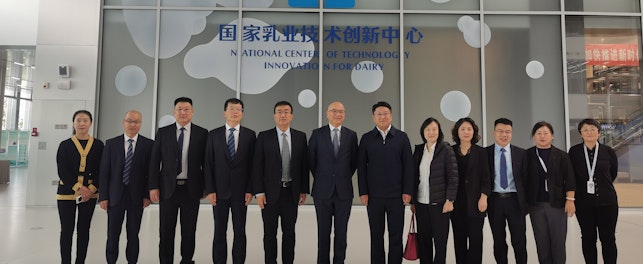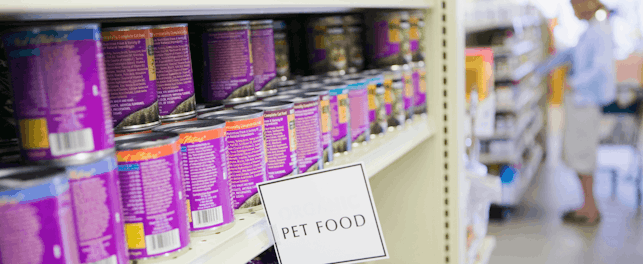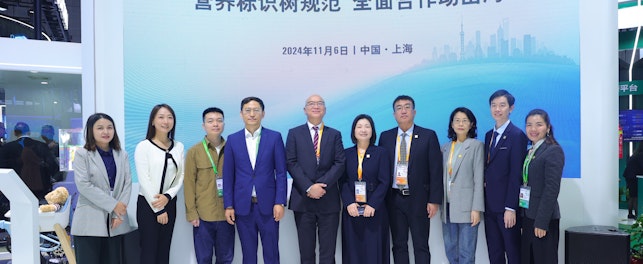Food fraud is one of the biggest challenges facing food businesses today. But product authentication could provide the solution to an industry grappling with the challenge of diminishing consumer trust and brands tarnished by food scares.
Food fraud is a global issue – and it’s a big business.
Incidents of food fraud go beyond quality assurance issues in individual companies. The entire sector feels the ripples, with consumer behavior changing profoundly in response to perceived ‘food scares’.
So what does it mean for the future of the food industry?
Food fraud is undoubtedly one of the biggest issues it faces. Consumer trust in both food products and food brands has taken a hit, often causing damage not only to the integrity of the implicated brands, but the sector as a whole.
Given the scale of the issue, the industry needs to work harder to tackle the causes of food fraud. And they must regain trust by helping consumers understand the principles of food authenticity and integrity.
Analytical food authentication solutions must be a central and recognizable part of the solution.
Defining Food Fraud
What actually constitutes food fraud?
According to the European Committee for Standardization (CEN) workshop agreement (CWA 17369:2019), food fraud is the act of intentionally causing a mismatch between food product claims and food product characteristics.
- Product characteristics refer to distinguishing features or attributes
- Product claims are statements that either explicitly or implicitly suggest a certain characteristic
One of the challenges has been developing an agreed set of definitions for terms commonly used in connection with food fraud and food authenticity. The diagram in figure 1, produced as a result of the CWA, helpfully sets out those standardized definitions and how the issues relate to each other.
The heart of the issue is not food fraud, but food product characteristics and claims.
Food fraud is a by-product arising from misrepresentation of characteristics. Similarly, authenticity is the result of claims which genuinely match the characteristics of the product.
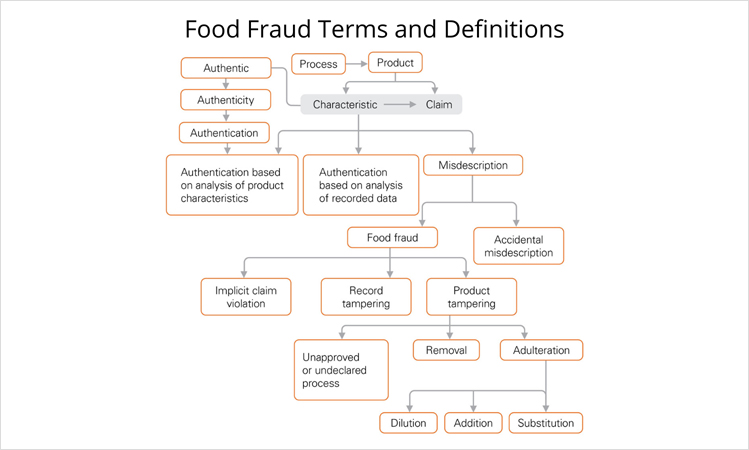
The Impact of Food Fraud
Today, we have an array of data and research that helps us understand how food fraud affects both the food industry and consumers.
The evidence clearly shows that food fraud incidents affect the whole industry. They alter consumer behavior in a way that has an impact on all brands – not just the companies directly affected.
Even so, a combination of confusion, fear, and lack of understanding even within the industry has hindered attempts to tackle the issue.
And what does it all mean for consumers?
They are bombarded with claims about the characteristics of food. Some are very specific. They read those claims and they understand them.
But consumers cannot easily assess how accurate and truthful they are. They cannot confidently decide that a product really does have additional value or benefits that they consider worth paying for.
High-end products feel the pinch especially hard. They rely on being able to demonstrate that the additional quality justifies a premium price - which they can’t do without consumer trust.
Rebuilding Trust in the Food Industry
Incidents of food fraud attract huge media interest.
Even where there is no tangible harm to consumers, the ensuing media coverage has a major impact on public confidence. Evidence points to diminished trust in food products and the claims manufacturers make about them.
‘Food authenticity’ has to be the solution to this, based on a ‘total authentication solution.’ This would guarantee that claims about food products are justified, ensure consumers can make informed decisions, and protect the industry and food businesses.
1. Tackling Food Fraud
Any attempt to tackle food fraud must be intelligence-led. It must ensure that systems are in place to continuously monitor food fraud incidents, and to identify changing trends and root causes.
Experts in a range of specialisms must contribute to identifying triggers and risk factors for food fraud. These are likely to include price fluctuations, harvest failures, climatic events, changing regulations, global politics, and so on.
There must also be a global database of food fraud incidents and their outcomes, which is based on solid, verifiable, and up-to-date data. This has to incorporate information that may not be in the public domain, including testing records and laboratory findings. It must also be guided by knowledge of the particular food fraud vulnerabilities of specific regions, industries, or products.
2. Authenticating Food Products
The starting point for authenticating food products is understanding which characteristics are at risk of food fraud. And secondly, identifying an analytical method of authenticating those at-risk characteristics.
Importantly, authentication methods must be comprehensive enough to detect any type of food adulteration, and not simply look for the risks we know about.
Testing programs must ensure consistency of approach yet draw on a range of techniques, and be dynamic enough to evolve in-line with emerging risks. There must be clearly defined parameters that set out when, where, how often, and for how long testing schemes should operate.
Testing must draw on state-of-the-art analytical methods and include a clear plan for what happens when food adulteration is detected. Findings must lead to evidence-based conclusions that further the fight to tackle food fraud.
Finally, authentication methods must be official, accredited, and globally recognized. This is essential in ensuring that findings are not just credible, but will be accepted internationally.
3. Consumer and Brand Protection
Consumers must also be part of the plan.
They need to better understand food fraud and food authenticity, and more specifically, they need to understand what is meant by authentication.
Evidence of diminishing consumer trust in food products tells us that both the industry and food brands are under threat. This is particularly true for producers of high-end products who struggle to distinguish themselves from everyday products.
Presenting consumers with verified evidence that supports food product claims could be the answer to this diminishing trust. And it could offer brands the protection they so desperately need.
Any attempt to exploit the benefits of authentication with consumers must, however, start with clear and comprehensive messaging. The messaging should ensure consumers genuinely understand and trust the evidence presented.
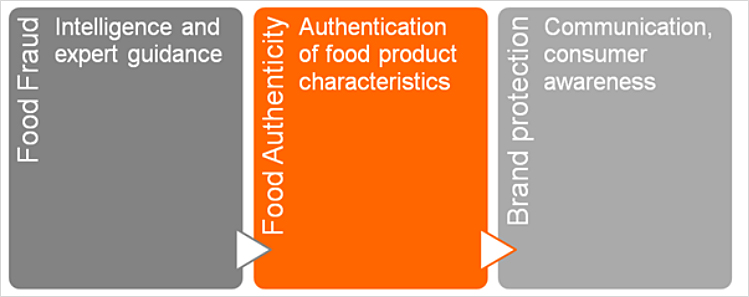
Food Authenticity Testing
SGS offers a comprehensive range of testing services that allow authentication of food and agricultural products in the whole supply chain. Its global coverage and high expertise allow the set-up of total solutions, tailored to the needs of every food business and supporting the development of food fraud vulnerability assessments.
Food Fraud Surveillance
SGS Digicomply offers a database dedicated to global food fraud surveillance and intelligence. This platform is constantly updating and aggregating facts from the most relevant sources, such as trade associations, governments, media, and scientific institutions.
Knowing your materials, ingredients and their associated risks is an essential part of the vulnerability assessment as prescribed by food safety certification schemes. Stay informed to protect your consumers and your brand.
To find out how the complete range of SGS services and support could help your organization, visit www.foodsafety.sgs.com today.
David Psomiadis
Head of Lab/Business Development Manager, Imprint Analytics
t: +43 676 39 69442
www.sgs.com/linkedinfood

